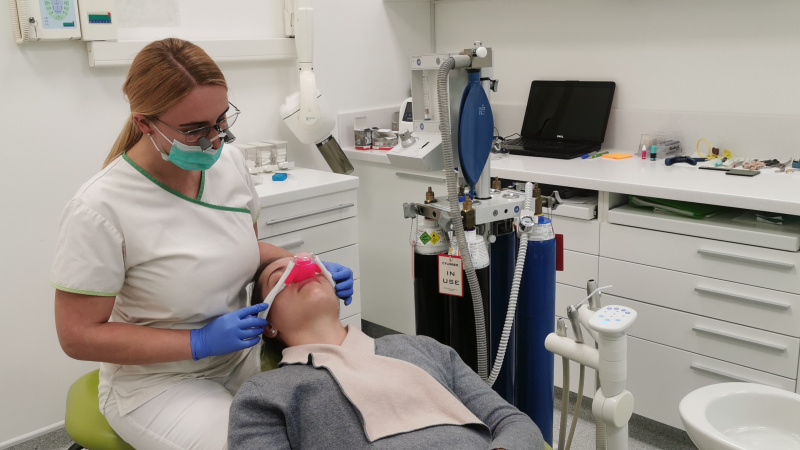Dental treatment under sedation - no more fear and stress
For most patients, a visit to the dentist is a necessity that can cause some level of stress. Some patients experience such high levels of stress that they prefer not to go to the dentist at all. However, Dr. Rūta Trapnauskė has excellent news for her patients and beyond: sedation is now available at her clinic! In an interview with Dr. Rūta Trapnauskė, she discusses the benefits of sedation dentistry.
When did the idea of sedation dentistry first come to your clinic?
Our clinic's specialists are concerned with the type of treatment we provide, so we are constantly expanding our knowledge, using the latest treatment methods, and ensuring that patients experience the least amount of stress during treatment. As a result, we can now offer nitrous oxide and intravenous sedation to our patients.
What is sedation dentistry?
Sedation dentistry involves the temporary suppression of consciousness and calming of a patient through medication. Dr. Rūta Trapnauskė, who has specialized training, can perform this procedure and offer the two most popular and modern sedation methods: nitrous oxide and intravenous sedation.
People often confuse sedation with anesthesia, so what exactly is sedation?
With sedation dentistry, all dental treatment procedures can be performed. Properly chosen sedation methods help to alleviate fear and stress before treatment begins. Sedation throughout the entire visit helps patients remain calm, and after the procedure, they have no unpleasant memories. Sedation also makes long treatment procedures easier - patients can relax, and the dentist can perform quality treatment, especially in cases where patients have a hard time sitting in the chair or experience nausea.
Sedation can save time for patients, as more procedures can be performed in a single visit to the dentist.
Sedation Dentistry for Children.
Our youngest patients usually experience the most stress. Children cannot sit still in the dentist's chair, and every touch by the dentist seems painful. It is difficult for the dentist to examine the patient, identify the problem, and provide appropriate treatment.
Sedation with nitrous oxide gas is an excellent solution in these situations. After inhaling these odorless and tasteless gases, the child becomes calm, does not feel pain, but remains alert and fully aware of everything.
Since the gas effect and elimination from the body are rapid, this method of sedation is considered safe and the most suitable for children.
Intravenous Sedation
Intravenous sedation is mainly intended for those who are particularly afraid of medical procedures or experience strong nausea reflex. This method of sedation also helps when performing long medical procedures, reduces patient fatigue, and helps them relax. During intravenous sedation, drugs are injected into a vein and the patient falls into a light sleep, but still reacts to environmental stimuli, hears the doctor's instructions, so intravenous sedation cannot be compared to anesthesia. However, they may partially or completely not remember the procedure, unpleasant sounds, and smells.
What procedures will you perform using sedation?
We will perform both therapeutic treatment under sedation and surgical procedures such as implantation or removal of wisdom teeth.



